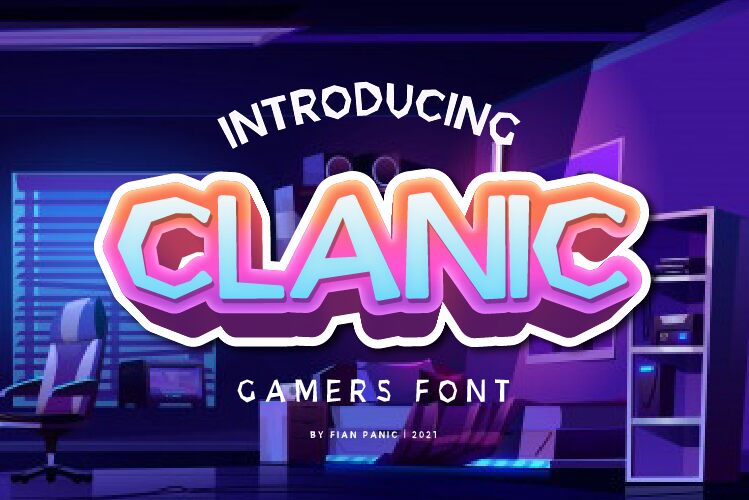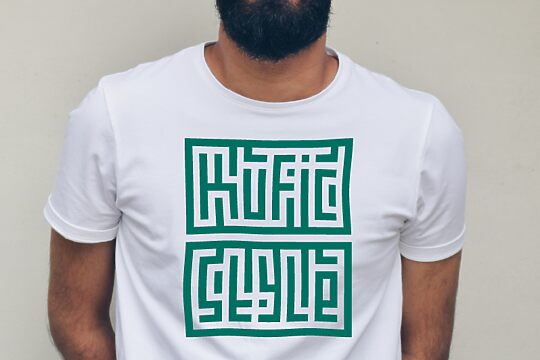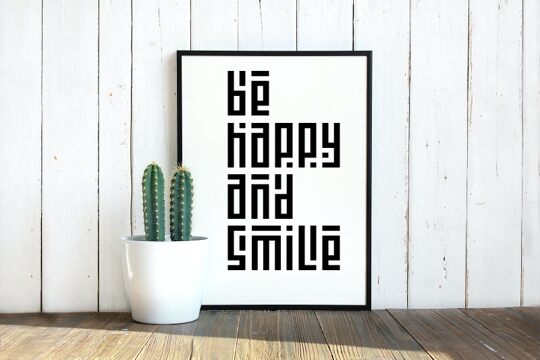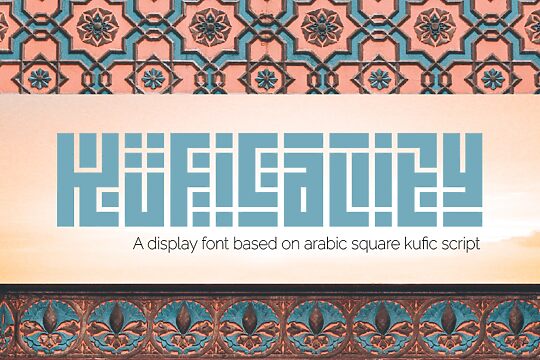
Description
Clanic font family was designed by Fian Cahyo Dwi Prasetyo as a three-dimensional geometric fancy typeface for educational, creative, and playful use. This font is available in 1 font style with a heavy dynamic outline, sharp angles, bold construction, and futuristic all-around style. Clanic is also a colorful typeface that combines thick and thin elements within each character for a unique design.
Use Clanic’s font in designing projects related to education such as children’s books, exercise notebooks, school flyers and posters, and mobile application/website designs. Clanic also fits into branding, advertising, identity consulting, and artistic exploration projects.
This outlined font is free for personal use but requires a license for commercial copy.
Use Clanic’s font in designing projects related to education such as children’s books, exercise notebooks, school flyers and posters, and mobile application/website designs. Clanic also fits into branding, advertising, identity consulting, and artistic exploration projects.
This outlined font is free for personal use but requires a license for commercial copy.
Author's note
Here is the enhanced version of the text:
The UI/UX Design Process: A Step-by-Step Guide
Designing a user interface (UI) and user experience (UX) is a complex task that requires a systematic approach. Here's a step-by-step guide to help you understand the design process:
1. Research and Analysis:
- Understand the target audience and their needs
- Conduct market research and competitive analysis
- Analyze the existing products or services
2. Information Architecture:
- Organize the content and functionality
- Develop the site structure and navigation
- Create wireframes and prototypes
3. Visual Design:
- Develop the brand identity and visual language
- Design the UI elements, such as typography, color scheme, and icons
- Create high-fidelity mockups and interactive prototypes
4. Interaction Design:
- Define the user interactions and user flows
- Design intuitive and smooth user interactions
- Implement micro-interactions and animations
5. Usability Testing:
- Conduct user testing to gather feedback
- Identify and address usability issues
- Iterate on the design based on user insights
6. Implementation and Deployment:
- Collaborate with the development team
- Ensure the design is properly implemented
- Monitor and continuously improve the UI/UX
Remember, the UI/UX design process is not linear; it often involves iterative cycles to refine and optimize the final product. By following this step-by-step approach, you can create a user-friendly and visually appealing interface that meets the needs of your target audience.
The UI/UX Design Process: A Step-by-Step Guide
Designing a user interface (UI) and user experience (UX) is a complex task that requires a systematic approach. Here's a step-by-step guide to help you understand the design process:
1. Research and Analysis:
- Understand the target audience and their needs
- Conduct market research and competitive analysis
- Analyze the existing products or services
2. Information Architecture:
- Organize the content and functionality
- Develop the site structure and navigation
- Create wireframes and prototypes
3. Visual Design:
- Develop the brand identity and visual language
- Design the UI elements, such as typography, color scheme, and icons
- Create high-fidelity mockups and interactive prototypes
4. Interaction Design:
- Define the user interactions and user flows
- Design intuitive and smooth user interactions
- Implement micro-interactions and animations
5. Usability Testing:
- Conduct user testing to gather feedback
- Identify and address usability issues
- Iterate on the design based on user insights
6. Implementation and Deployment:
- Collaborate with the development team
- Ensure the design is properly implemented
- Monitor and continuously improve the UI/UX
Remember, the UI/UX design process is not linear; it often involves iterative cycles to refine and optimize the final product. By following this step-by-step approach, you can create a user-friendly and visually appealing interface that meets the needs of your target audience.



